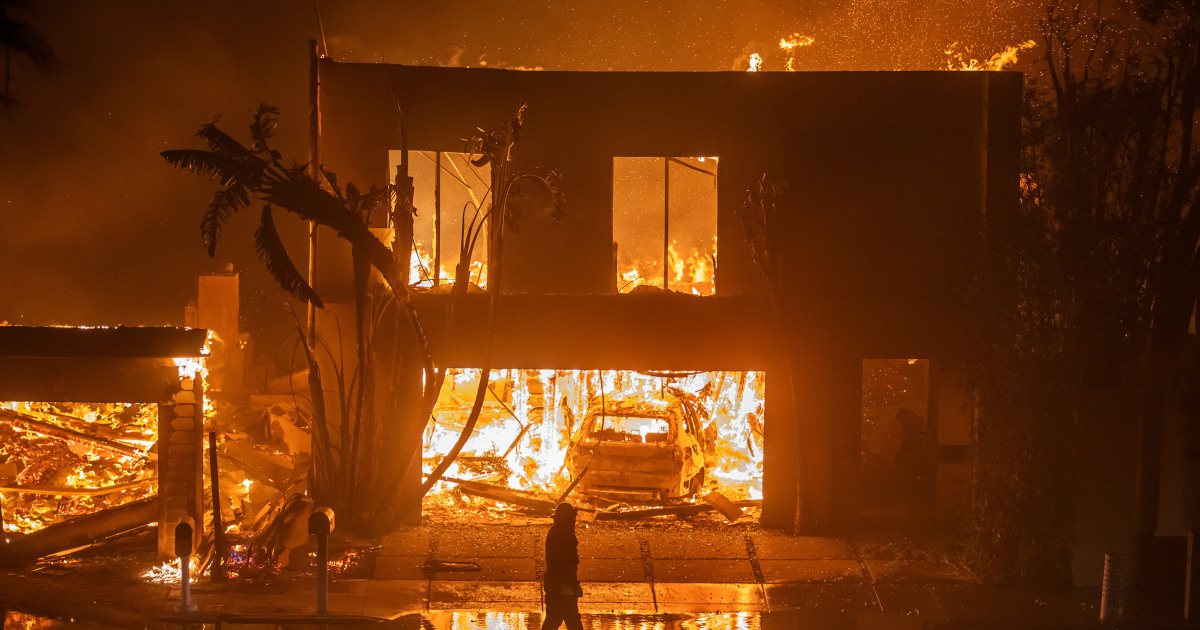Unraveling the Inferno: The Conditions Leading to L.A.’s Devastating Fires
As wildfires wreak havoc across Los Angeles, experts reflect on the alarming conditions that led to this catastrophic event. Understanding how these fires ignited and spread is crucial for future fire management in urban areas. By examining the intricate web of environmental factors, climate patterns, and human influences, we can glean insights into the ongoing challenges of wildfire prevention and response.
The Perfect Storm: Conditions That Fueled the Fires
Several key factors contributed to the ferocity of the recent wildfires in Los Angeles. Each element acted in concert, creating a scenario that wildfire experts had long anticipated:
- Drought Conditions: Southern California has experienced years of below-average rainfall. This prolonged drought has left vegetation dry and brittle, making it highly susceptible to ignition.
- High Temperatures: Record-breaking heat waves exacerbated the situation. High temperatures not only desiccate vegetation but also create a conducive environment for fire spread.
- Santa Ana Winds: These strong, dry winds blow from the inland desert regions towards the coast. They can rapidly spread flames across vast areas, significantly complicating firefighting efforts.
- Urban Encroachment: As urban areas expand into wildland areas, the interface between homes and nature becomes a battleground. Structures are often built in fire-prone zones, increasing the risk to property and life.
Scientific Predictions: How Experts Anticipate Wildfires
Wildfire prediction is both an art and a science. Experts employ various tools and methodologies to forecast fire risks. These include:
- Remote Sensing: Satellites and aerial imagery help monitor vegetation health, moisture levels, and even temperature fluctuations across vast landscapes.
- Climate Models: By analyzing historical climate data and projecting future scenarios, scientists can identify areas at increased risk of wildfires.
- Fire Behavior Modeling: Advanced simulations can predict how fires will spread under different conditions, aiding in tactical firefighting decision-making.
However, despite these tools, the unpredictability of wildfires remains a significant challenge. The dynamic nature of weather and human factors can disrupt even the most robust predictions.
Lessons from the Past: A Historical Perspective
Los Angeles has a history of devastating wildfires. Events like the 1993 Malibu fire and the 2018 Woolsey fire serve as stark reminders of the risks inherent in this region. Each incident offers valuable lessons:
- Importance of Preparedness: Communities that engage in proactive fire management practices, such as creating defensible space around homes and conducting controlled burns, are more resilient.
- Community Awareness: Public education campaigns about fire risks and evacuation protocols can save lives during emergencies.
- Infrastructure Resilience: Investing in fire-resistant building materials and landscaping can mitigate damage and protect homes.
Current Fire Management Strategies
In response to the increasing frequency and severity of wildfires, Los Angeles has adopted several strategies:
- Firebreaks: Creating clear zones devoid of vegetation can help slow the spread of fires.
- Controlled Burns: These intentional fires reduce excess fuel on the ground, lowering the risk of larger, uncontrolled blazes.
- Community Engagement: Local agencies work with residents to develop fire safety plans and promote awareness of fire risks.
The Role of Technology in Fire Management
Advancements in technology are playing a crucial role in modern fire management. Innovations such as:
- Drones: Unmanned aerial vehicles are used for real-time monitoring, allowing firefighters to assess fire behavior and deployment strategies from the sky.
- Predictive Analytics: Machine learning algorithms can analyze data from various sources to forecast fire risks more accurately.
- Mobile Applications: Apps that provide real-time updates on fire conditions and evacuation routes are becoming essential tools for residents in fire-prone areas.
These technologies enhance the ability of fire management teams to respond quickly and effectively, potentially saving lives and property.
Looking Ahead: The Future of Fire Management in Urban Areas
The recent wildfires in Los Angeles offer a critical opportunity for reflection and change. As experts unravel the inferno, several key insights emerge:
- Climate Adaptation: Urban planners and policymakers must integrate climate resilience into their strategies, recognizing that wildfires will likely become more frequent and severe.
- Community Collaboration: Enhanced partnerships between local governments, fire departments, and communities can foster a culture of preparedness and resilience.
- Policy Reform: Legislation aimed at limiting development in high-risk areas and promoting sustainable land management practices can help mitigate future risks.
In conclusion, while the devastating fires that have swept through Los Angeles serve as a grim reminder of nature’s power, they also highlight the proactive measures that can be taken to manage and mitigate wildfires. By understanding the factors that led to this catastrophe and employing innovative strategies, experts and communities can work together to forge a safer future. The journey towards effective fire management is ongoing, but with collaboration, technology, and a commitment to learning from past events, there is hope for a more resilient Los Angeles.
See more Your Daily Weather



